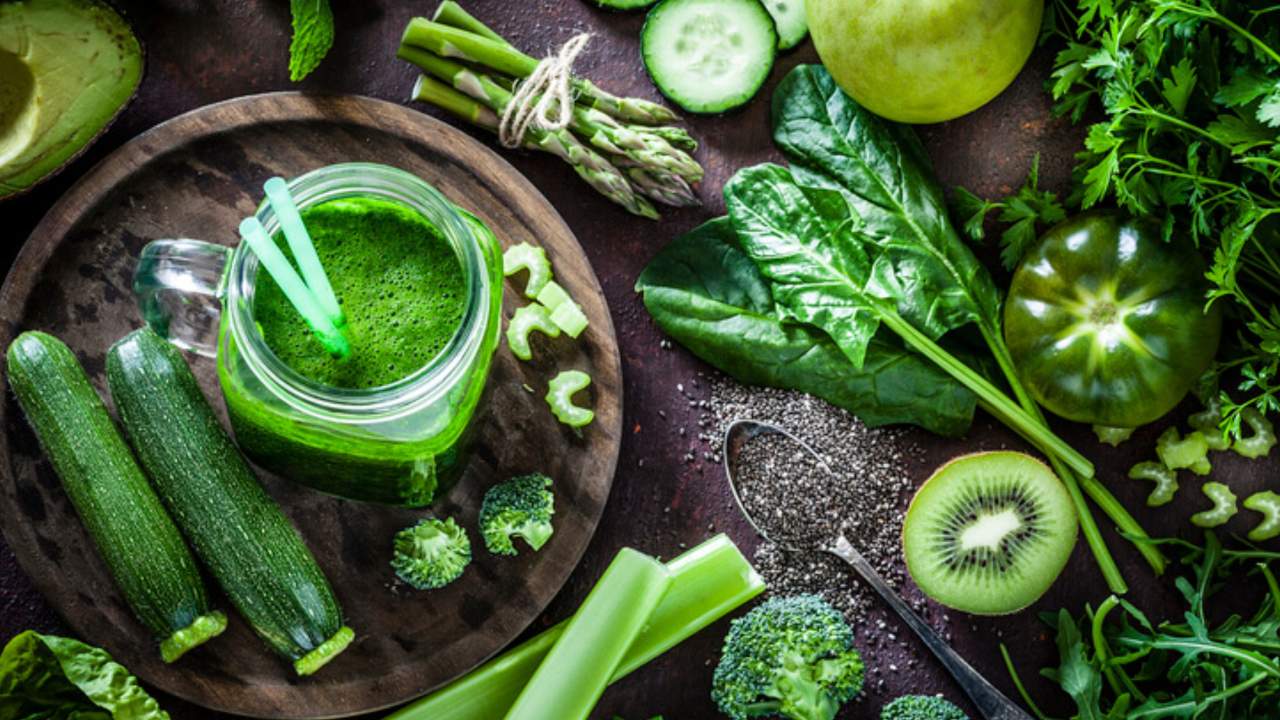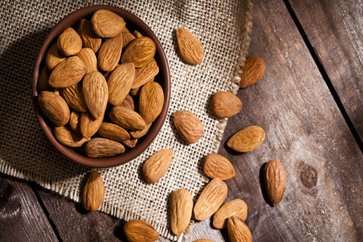Ayurvedic Tips: How to Cleanse and Boost Each Kapha Subdosha
Ayurveda, the traditional science of healthy living, emphasizes not simply remedy strategies but in addition the rules of sustaining general well-being. It views the world and human beings as interconnected programs ruled by common legal guidelines and elementary parts. 
Based on Ayurveda, every part, together with people, consists of the 5 main parts (mahabhuta): ether (house), air (motion), fireplace (transformation), water (fluidity), and earth (strong matter).
The three doshas—Vata, Pitta, and Kapha—are central to Ayurvedic understanding and every is related to two of those main parts:
- Vata: Ether and Air
- Pitta: Fireplace and Water
- Kapha: Water and Earth
Inside every dosha, there are 5 subdoshas, every liable for particular physiological and psychological features. Common cleaning of those subdoshas, often known as mahabhuta shodhana, is essential for sustaining bodily well being and nurturing constructive character traits.
Ayurveda asserts {that a} harmonious thoughts and virtuous qualities are integral to reaching optimum well being. Right here’s a more in-depth take a look at the subdoshas, their features, and their traits:
Vata Subdoshas
1.Prana Vata:
- Perform: Governs psychological exercise, respiratory processes, and cognitive features.
- Character Traits: Influences creativity, enthusiasm, and psychological readability. Imbalances could result in nervousness or scattered ideas.
2. Udana Vata:
- Perform: Regulates speech, enthusiasm, and the upward motion of vitality.
- Character Traits: Impacts communication expertise, confidence, and management. Imbalances could cause speech difficulties or lack of motivation.
3. Samana Vata:
- Perform: Controls digestion, absorption, and assimilation of vitamins.
- Character Traits: Influences psychological stability, focus, and understanding. Imbalances could result in digestive points and erratic ideas.
4. Apana Vata:
- Perform: Manages elimination processes and reproductive features.
- Character Traits: Impacts emotional launch, self-control, and groundedness. Imbalances may end up in constipation or reproductive points.
5. Vyana Vata:
- Perform: Controls circulation, motion, and distribution of vitamins all through the physique.
- Character Traits: Influences adaptability, vitality, and general vitality. Imbalances could trigger circulatory issues or fatigue.
Pitta Subdoshas
Agnikarta Pitta:
- Perform: Governs digestion and metabolic processes.
- Character Traits: Impacts mind, willpower, and management. Imbalances can result in irritability or digestive issues.
Pachaka Pitta:
- Perform: Chargeable for breaking down meals and absorbing vitamins.
- Character Traits: Influences analytical pondering and significant decision-making. Imbalances could trigger digestive disturbances and temper swings.
Ranjaka Pitta:
- Perform: Chargeable for the formation of blood and liver operate.
- Character Traits: Impacts emotional resilience, ambition, and self-confidence. Imbalances could result in jaundice or anger.
Sadhaka Pitta:
- Perform: Governs psychological features and emotional responses.
- Character Traits: Influences psychological readability, motivation, and emotional stability. Imbalances may end up in stress and cognitive points.
Bhrajaka Pitta:
- Perform: Manages pores and skin well being and tissue metabolism.
- Character Traits: Impacts look, enthusiasm, and self-expression. Imbalances could trigger pores and skin situations and extreme warmth.
Kapha Subdoshas
Kledaka Kapha:
- Perform: Moisturizes and lubricates the abdomen and intestines.
- Character Traits: Influences emotional stability and endurance. Imbalances can result in digestive points and lethargy.
Bodhaka Kapha:
- Perform: Supplies lubrication to the oral cavity and aids in style notion.
- Character Traits: Impacts communication and sensory experiences. Imbalances could end in poor style notion and sinus points.
Tarpaka Kapha:
- Perform: Moistens and nourishes the mind and nervous system.
- Character Traits: Influences psychological calmness, persistence, and empathy. Imbalances can result in psychological heaviness or sluggishness.
Sleshaka Kapha:
- Perform: Lubricates and protects the joints and connective tissues.
- Character Traits: Impacts bodily stability, energy, and flexibility. Imbalances could trigger joint ache or stiffness.
Avabhataka Kapha:
- Perform: Supplies stability and construction to the physique.
- Character Traits: Influences bodily endurance and general resilience. Imbalances can result in weight acquire and extra moisture retention.
Understanding and cleaning these subdoshas is key in Ayurveda to make sure holistic well-being.
By sustaining stability in these delicate features, one can obtain each bodily well being and the event of fascinating character traits.
Ayurvedic practices supply a complete method to supporting well being by addressing each the bodily and psychological dimensions of human life.
Every day Well being Routine & the Purification of Subdoshas in Ayurveda
In Ayurveda, sustaining optimum well being entails a every day routine designed to stability and purify the first parts and subdoshas inside our physique.
Every exercise in our routine helps particular features of our physiological and psychological well-being. Right here’s an in depth take a look at how our every day well being practices align with Ayurvedic rules to strengthen and purify the doshas and their subdoshas:
1. Morning Routine
1. Bowel and Bladder Emptying:
- Function: Important for eliminating waste and sustaining a wholesome digestive system. This apply helps the correct functioning of Apana Vata, a subdosha liable for elimination.
2. Oral Hygiene:
- Function: Brushing tooth and tongue clears toxins and micro organism, balancing Kapha and supporting Sadhaka Pitta, which influences psychological readability and digestion.
3. Facial and Hand Washing:
- Function: Cleanses the pores and skin and prepares the physique for the day. This apply helps in sustaining Bhrajaka Pitta, which governs pores and skin well being.
4. Showering:
- Function: Refreshes and cleanses the physique, aiding within the stability of Vyana Vata and Sleshaka Kapha, which affect circulation and joint lubrication.
5. Ingesting Heat Water:
- Function: Flushes out toxins and helps digestion. This apply balances Agni (digestive fireplace) and helps within the purification of Jala (water).
2. Bodily Actions
1. Train:
- Function: Stimulates metabolism and enhances bodily well being. Common train balances Vata and Pitta doshas and helps Kledaka Kapha by making certain correct fluid stability.
2. Pranayama (Respiratory Workout routines):
- Function: Regulates the breath and calms the thoughts. Pranayama purifies Vayu (air) and helps Prana Vata, which governs psychological exercise and vitality move.
3. Meditation and Chanting:
- Function: Enhances psychological readability and emotional stability. Meditation purifies Akasha (ether) and balances Sadhaka Pitta.
3. Self-Care Practices
1. Self-Therapeutic massage (Abhyanga):
- Function: Includes making use of oil to the physique to nourish and soothe the pores and skin. For Kapha constitutions, dry powder is used as an alternative of oil. This apply balances Vata and Kapha by offering nourishment and enhancing circulation.
2. Anu-Tailam Nasal Drops:
- Function: Instilling oil into the nostril helps Prana Vata and maintains the well being of the nasal passages, which is important for general respiratory operate.
4. Dietary Practices
1. Common Meals:
- Function: Ensures correct nourishment and helps digestion. Consuming common meals helps keep Agnikarta Pitta, which is liable for metabolic processes.
2. Fasting Days:
- Function: Conducting fasting or fasting days each 1-2 weeks helps to detoxify the physique and stability Sadhaka Pitta and Ranjaka Pitta. It permits the digestive system to reset and enhances general well-being.
Purification and Stability of Main Components
- Earth (Prithvi): Maintained by way of common and wholesome bowel actions.
- Water (Jala): Supported by ingesting heat water within the morning.
- Fireplace (Agni): Stimulated by bodily train and common exercise.
- Air (Vayu): Balanced by way of pranayama and aware respiratory.
- Ether (Akasha): Purified by way of meditation and psychological focus.
By integrating these practices into our every day routine, we align with Ayurvedic rules to maintain our doshas and subdoshas secure and pure.
This holistic method not solely helps bodily well being but in addition fosters psychological and emotional well-being, making certain a harmonious stability of the 5 main parts and their related subdoshas.
Purification of Main Components (Bhuta Shudhi) for the 15 Subdoshas: Vata
In Ayurveda, every of the three doshas is split into 5 sub doshas, every of which governs particular features within the physique.
Purifying these subdoshas entails balancing the first parts related to them by way of numerous practices. Here is an in depth clarification of find out how to purify the first parts for every of the Vata sub doshas and their related traits:
1. Prana Vata
- Main Ingredient: Ether (Akasha)
- Location: Head and mind
- Purification Follow: Meditation
Course of:
- Prana Vata governs the consumption of air, meals, and data, and is essential for psychological and non secular well-being.
- Meditation is used to purify Prana Vata by calming the thoughts and permitting for deep self-awareness.
States of Existence:
- Waking State: Consciousness of the bodily physique.
- Falling Asleep: Absence of energetic thoughts and physique.
- Dreaming State: Energetic thoughts with passive physique.
- True Awakening: Achieved by way of meditation, the place each physique and thoughts discover a deeper state of existence.
Developed Advantage: Non secular progress and self-realization.
2. Udana Vata
- Main Ingredient: Air (Vayu)
- Location: Chest and coronary heart
- Purification Follow: Studying prayers or mantras
Course of:
- Udana Vata influences speech, expression, and emotional stability.
- Reciting prayers or mantras helps stability Udana Vata by nurturing compassion and devotion.
Developed Qualities: Compassion and devotion to God.
3. Samana Vata
- Main Ingredient: Fireplace (Agni)
- Location: Digestive tract
- Purification Follow: Fasting
Course of:
- Samana Vata helps the digestive system and inside stability.
- Fasting helps to cleanse Samana Vata by regulating digestive features and selling inside concord.
Developed High quality: Fairness and stability in digestion and metabolism.
4. Vyana Vata
- Main Ingredient: Water (Jala)
- Location: Blood circulation and muscle exercise
- Purification Follow: Yoga asanas
Course of:
- Vyana Vata governs circulation and muscular features.
- Yoga asanas facilitate the motion of blood and lymph, supporting the stability of Vyana Vata.
Developed Qualities: Modesty and humility.
5. Apana Vata
- Main Ingredient: Earth (Prithvi)
- Location: Massive gut and genitals
- Purification Follow: Defecation
Course of:
- Apana Vata controls the elimination course of and reproductive features.
- Common bowel actions and correct elimination are important to cleanse Apana Vata.
Developed High quality: Forgiveness and letting go of waste, each bodily and emotionally.
Abstract of Practices for Subdosha Purification:
- Prana Vata: Meditation for non secular perception and internal peace.
- Udana Vata: Recitation of prayers or mantras to domesticate compassion and devotion.
- Samana Vata: Fasting to keep up digestive stability and inside fairness.
- Vyana Vata: Yoga asanas to reinforce circulation and foster humility.
- Apana Vata: Common defecation for bodily and emotional launch, fostering forgiveness.
By adhering to those practices, people can keep the stability of their subdoshas and promote general well being, aligning with Ayurvedic rules for a harmonious life.

























